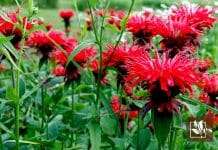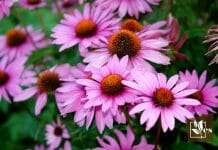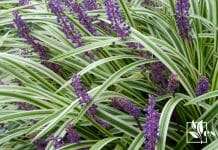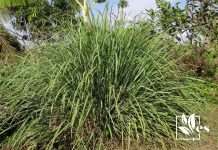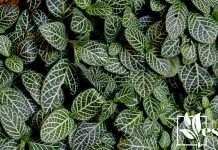The wandering jew companion plants have various interesting characteristics that make them beneficial – this can be taken advantage of by planting plants such as begonias and impatiens as companion plants. Such benefits could be to the wandering Jew plant, humans, and the environment.
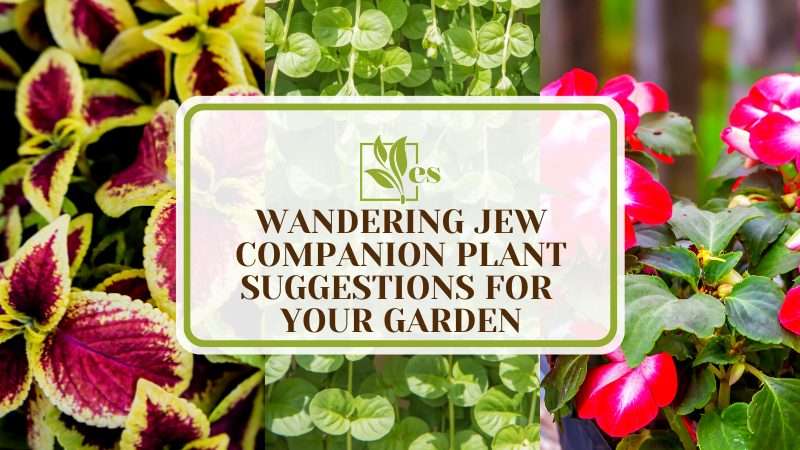
This article will help you take advantage of the benefits that are appealing to you by listing different wandering jew companion plants that are at your disposal.
“Companion planting can increase biodiversity in agriculture, contributing to a 20% increase in beneficial insects.”University of Florida
JUMP TO TOPIC
A Comprehensive List of Wandering Jew Companion Plants
The wandering jew companion plants are quite many, but they include the following: creeping Jenny, purple pixie leropetalum, begonia, coleus, impatiens, and pothos.
The wandering Jew, also known as the inch plant, is a gorgeous plant that is mainly grown in gardens and homes to enhance aesthetic appearance.
The emerald green, deep purple, and silver color combinations on this plant cannot pass unnoticed – even better when grown with the right combination of plants around it. Please note that the scientific name of the wandering Jew is Tradescantia zebrina, though it is often confused with Tradescantia pallida.
1. Spider Plant
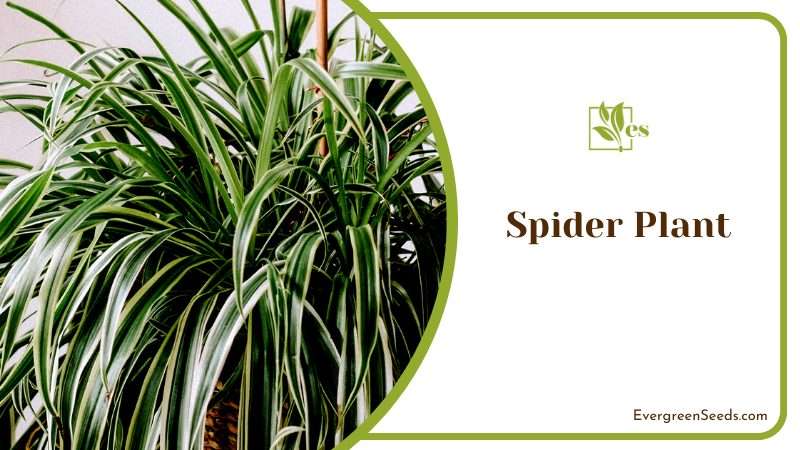
This remarkable plant boasts anti-inflammatory properties and serves as a natural insect repellent, keeping pesky bugs at bay. What's truly reassuring is its non-toxic nature, making it a perfect choice for households with pets and young children, ensuring safety all around.
Renowned for its air-purifying abilities, making it an excellent choice for indoor spaces. It effectively filters the air, removing pollutants and enhancing overall air quality. Additionally, it increases humidity levels, creating a healthier and more comfortable
This plant produces small white flowers and boasts stems that can reach up to 2 feet in height. Its thick, fleshy roots make it remarkably resilient to fluctuating watering conditions.
Irrigate once every week in summer and allow the soil to dry between waterings in winter. The growing medium should be soil-based and well-draining. Thrives well under bright, indirect sunlight.
The spider plant is so called due to its appearance, which imitates that of a spider. Other common names for this plant are spider ivy and ribbon plant. These plants have relatively long life spans that can stretch up to between 20 and 50 years.
2. Snake Plant
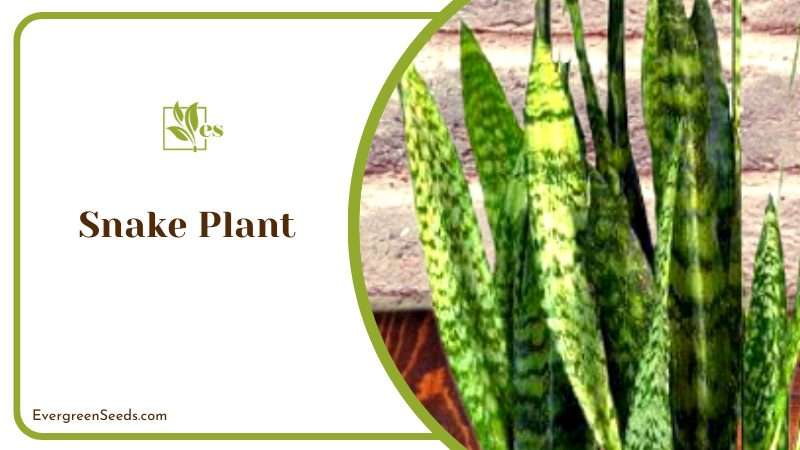
This hardy indoor gem thrives on neglect. Its robust nature makes it a perfect choice for those lacking a green thumb. Beyond aesthetics, this plant offers the potential to elevate your mental well-being by reducing stress and enhancing air quality.
Excels at purifying indoor air by effectively filtering out common pollutants like toluene, making it a superb choice for homes and offices. Additionally, it has been known to offer relief for allergy sufferers, further highlighting its practicality and health benefits.
Characterized by leaves resembling swords, approximately 2 feet in length, this plant exhibits stiff, upright foliage adorned with stunning yellow and white striped variegations. Notably, it lacks any visible stems, making it an attractive and low-maintenance addition to any space.
Ensure good drainage to prevent waterlogging. Apply monthly fertilizers from April to September. Thrives in both full sun and low light conditions.
Snake plants are also referred to as the sansevieria because of their scientific name, which is, Sansevieria trifasciata. Based on Feng Shui teachings, this plant is believed to attract prosperity, good energy, and money.
Therefore, the plant is not only beautiful in appearance but it is also associated with good things.
3. Begonia
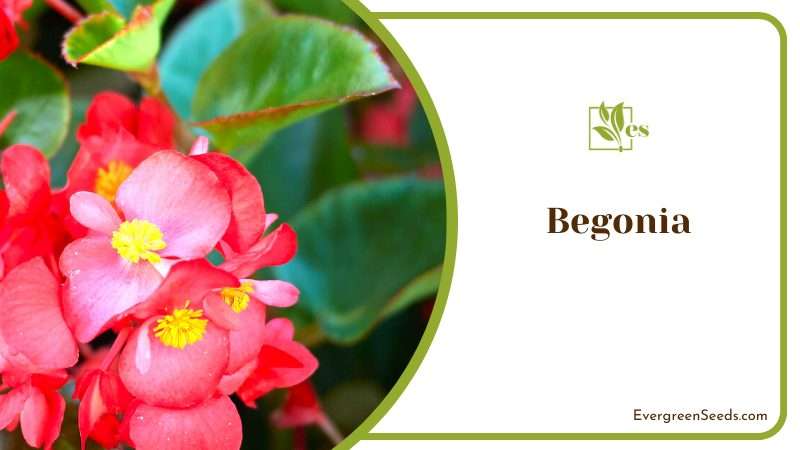
These elegant plants boast leaves with natural healing properties. Their foliage can effectively treat diarrhea, skin ailments, and respiratory infections. Additionally, they're not just beneficial to our health but also act as gentle air purifiers.
Cherished for their dazzling foliage and vibrant flowers. They're commonly used to adorn living spaces, adding a touch of natural beauty. These plants also excel as bedding options in hanging baskets and window boxes, Interestingly, some begonia flowers are edible.
This plant appears bushy with fleshy stems, boasting single or double flowers in pink, white, red, and bicolor variations. Its waxy leaves range from dark green to bronze, adding to its overall charm and appeal in gardens.
For optimal care, ensure your plant's soil is well-draining, retaining moisture while rich in organic matter. Bright light exposure is key to encouraging vibrant blooms, and on average, water every three days to maintain the ideal moisture level for a healthy plant.
It is vital for you to note that despite its beauty, the begonia is toxic to humans and pets upon consumption. The toxins are mainly stored in the tubers of the plant. Therefore, if you are a pet lover and you also consider having this plant in your collection, be sure to keep it out of the reach of children and your animals. Even the rare begonias should be kept out of reach.
4. Creeping Jenny
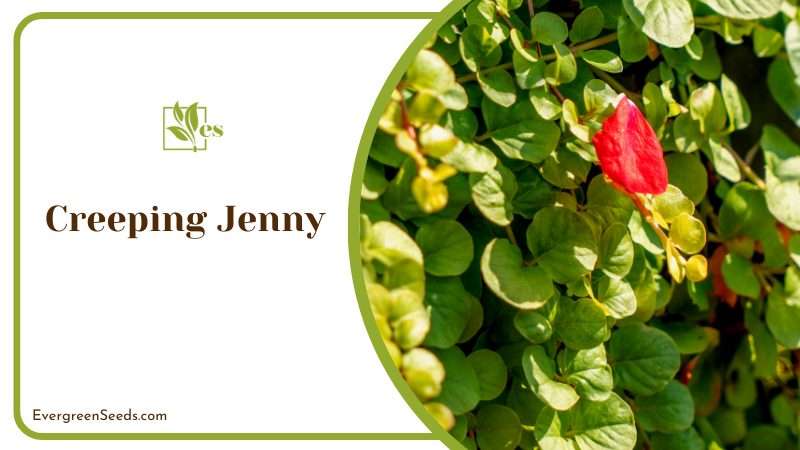
This vigorous ground cover boasts ease of cultivation, thriving effortlessly in various conditions. Its rapid, creeping growth acts as a natural weed suppressant, forming a dense, low carpet that smothers unwanted plants and keeps your garden beautifully tidy.
A versatile plant, ideal for ground cover in gardens. Its vibrant green foliage cascades beautifully in hanging baskets, adding a pop of color and texture to indoor and outdoor spaces.
This ground cover boasts heart-shaped leaves, while its bell-shaped yellow flowers bloom from May to August. Its creeping habit thrives in damp grasslands, making it an ideal choice for lush, low-maintenance landscapes.
Thrives in partial shade or full sun. To ensure its health, it's crucial to regularly inspect for fungal infections, catching them early. This plant prefers nutrient-rich, loamy-sandy soils for optimal growth.
The creeping Jenny is also referred to as the moneywort and its botanical name is Lysimachia nummularia. This plant, which belongs to the Primulaceae family, has its origins in Europe.
Please note that the creeping Jenny is nontoxic to animals and humans, which makes it a good option if you have pets and younger children in your home. This plant is even easy to propagate, considering that its stems can quickly develop roots, as they grow along the ground.
5. Purple Pixie Leropetalum
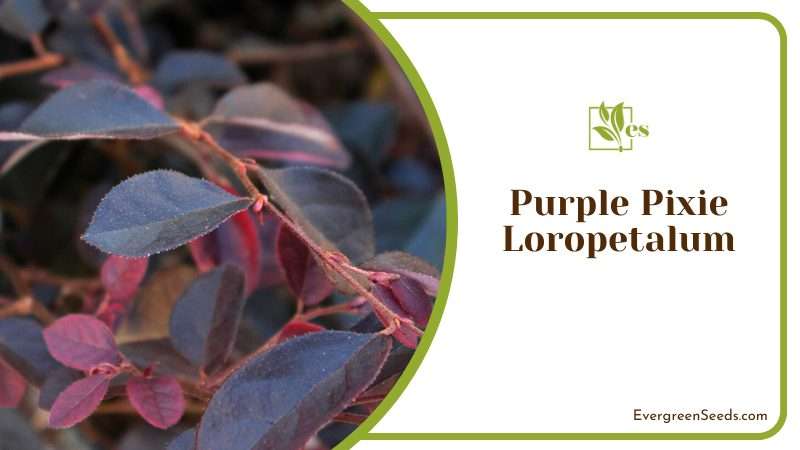
Easy-to-care-for gem in the garden. Its resilience shines as it tolerates short droughts. This low-maintenance shrub is a reliable choice for those seeking a hardy and vibrant addition to their landscape.
It excels as a border edger, providing a decorative punch with its striking foliage and low, spreading habit. This lovely plant also serves as an excellent ground cover, creating a lush carpet of purple charm to enhance your landscape.
A dwarf cultivar with year-round burgundy foliage. This plant boasts vibrant, pink showy flowers. Its compact size and striking color make it a charming addition to any garden.
A delightful addition to any garden. This low-maintenance beauty thrives under full sun or partial shade and is adaptable to well-draining, slightly acidic soil. To keep it happy, regular watering during its growing season is essential.
The purple pixie leropetalum exhibits a unique weeping nature. When it grows, it usually doesn’t exceed 2 feet. Please note that this plant has a compact nature so there is no need to prune it.
6. Coleus
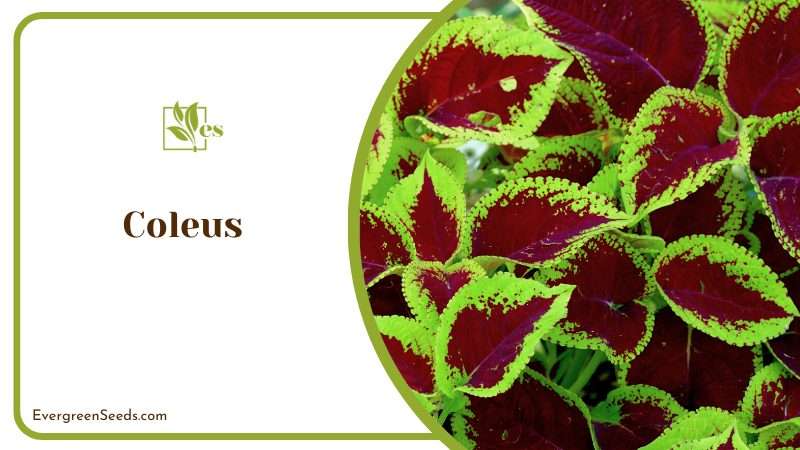
Contains forskolin, promoting a healthier heart by enhancing cardiac function and increasing blood flow. This natural compound offers numerous benefits without the need to mention the plant's name.
This versatile plant is often used as a bedding plant, adding vibrant colors to garden landscapes. Beyond its ornamental value, it has historical applications in treating rashes, epilepsy, and asthma, making it a unique addition to both gardens and traditional medicinal practices.
This plant's square-shaped stems bear opposite leaves featuring striking variegation, with vibrant green and magenta patterns. It's further adorned by charming two-lipped flowers, making it a delightful addition to any garden.
Can thrive in full sun and shade, making it versatile for different garden environments. To ensure its health, plant it in fertile, well-draining, and well-aerated soil. Watering should be done when the upper inch of the plant's soil is dry
This plant is a member of the Lamiaceae family. Some species of coleus contain toxic substances, like the Coleus ampoinicus. Therefore, it is of uttermost importance that you exercise caution when you handle these plants, especially if you have pets and young children around.
7. Pothos
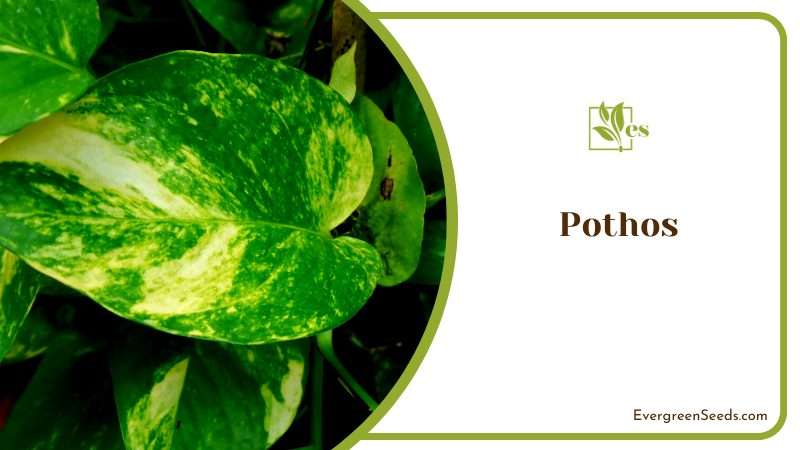
It's a proficient air purifier, diligently ridding your living space of toxins like formaldehyde and benzene. What's more, during the night, it quietly releases oxygen, ensuring a refreshing atmosphere for restful sleep. Additionally, it's an unsung hero in odor elimination, effectively neutralizing unpleasant scents.
A very popular choice for beautifying indoor spaces, thanks to its lush green foliage. It's not just a visual delight; it also serves a practical purpose in fishkeeping. Can be used to reduce nitrate levels in aquarium tanks, promoting a healthier aquatic environment for your fish.
Leaves are heart-shaped, waxy, and thick, with a dominant green color that has splashes of yellow. Mature leaves are perforated, while the juvenile ones are entire, giving this plant a unique and appealing visual contrast.
Water every one to two weeks, aiming for slightly moist soil, but avoid overwatering. Place in moderate indoor light or shady outdoor spots. Opt for a soilless growing medium or well-draining soil for healthy growth.
The other common names for pothos are arum ivy, taro vine, hunter’s robe, and money plant. This plant is called Pothos because when it was first discovered, it was given the name Pothos aureus.
All parts of this plant are toxic because they contain oxalate crystals that can cause irritation upon chewing or biting the plant. The sap of the pothos can trigger eye irritation and dermatitis, which is a skin condition.
8. Impatiens
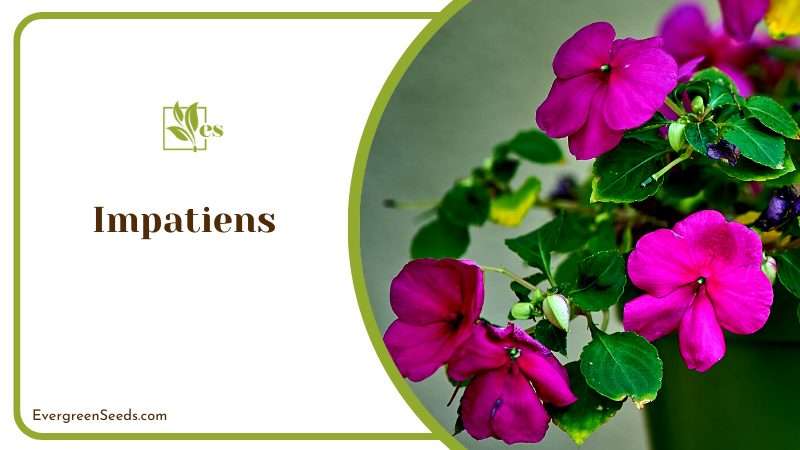
This plant offers a multitude of benefits. It diligently purifies the air by removing harmful substances like carbon monoxide, benzene, and formaldehyde. Additionally, it's a handy remedy for treating insect bites and bee stings.
A superb choice for bedding plants, ideal for enhancing any garden's aesthetic appeal. Their vibrant blooms and lush foliage create a colorful carpet, making them a go-to for adding a pop of color and charm to garden beds and borders.
This particular plant reaches a height of approximately 2 feet and features delicate, easily breakable soft leaves, flowers, and stems. Its leaves are characterized by pointed tips and toothed edges, contributing to its overall charm and aesthetic appeal in the garden.
Full to partial light is ideal for the growth and survival of this plant. Soils should be well-draining and moist, but not waterlogged. It requires two to four inches of water every week.
Did you know that impatiens is associated with motherly love, though there are some cultures that link the plant with impatience?
This shows that this plant is highly associated with emotions so you can have this plant to keep in touch with your feelings. The impatiens’ origins are in Eastern Africa.
References
- Susan Mahr. Spider plant, Chlorophytum comosum. University of Wisconsin – Madison,
Retrieved from https://hort.extension.wisc.edu/articles/spider-plant-chlorophytum-comosum/ - Karen Russ, Al Pertuit. (Oct 21, 2020). BEGONIA. Clemson University Cooperative Extension.
Retrieved from https://hgic.clemson.edu/factsheet/begonia/ - Plant of the Week: Moneywort (Creeping Jenny). The University of Arkansas System Division of Agriculture.
Retrieved from https://www.uaex.uada.edu/yard-garden/resource-library/plant-week/moneywort-6-24-05.aspx - Alicia R. Lamborn. Purple Pixie Loropetalum. University of Florida
Retrieved from https://sfyl.ifas.ufl.edu/media/sfylifasufledu/baker/docs/pdf/horticulture/demonstration-gardens/Loropetalum-Purple-Pixie.pdf - Gary R. Bachman. This spring demonstrates advantages of loropetalum. Mississippi State University.
Retrieved from http://extension.msstate.edu/news/southern-gardening/2018/spring-demonstrates-advantages-loropetalum - John D. Mark. (2018). Coleus. Science Direct.
Retrieved from https://www.sciencedirect.com/topics/pharmacology-toxicology-and-pharmaceutical-science/coleus


